3-Chloro-2-methyl-1-propene

3-Chloro-2-methyl-1-propene structure
|
Common Name | 3-Chloro-2-methyl-1-propene | ||
|---|---|---|---|---|
| CAS Number | 563-47-3 | Molecular Weight | 90.551 | |
| Density | 0.9±0.1 g/cm3 | Boiling Point | 72.4±9.0 °C at 760 mmHg | |
| Molecular Formula | C4H7Cl | Melting Point | -80 °C | |
| MSDS | Chinese USA | Flash Point | -10.0±0.0 °C | |
| Symbol |




GHS02, GHS05, GHS07, GHS09 |
Signal Word | Danger | |
| Name | 3-Chloro-2-methylpropene |
|---|---|
| Synonym | More Synonyms |
| Density | 0.9±0.1 g/cm3 |
|---|---|
| Boiling Point | 72.4±9.0 °C at 760 mmHg |
| Melting Point | -80 °C |
| Molecular Formula | C4H7Cl |
| Molecular Weight | 90.551 |
| Flash Point | -10.0±0.0 °C |
| Exact Mass | 90.023628 |
| LogP | 2.20 |
| Vapour density | 3.12 (vs air) |
| Vapour Pressure | 129.6±0.1 mmHg at 25°C |
| Index of Refraction | 1.410 |
| Water Solubility | 0.5 g/L (20 ºC) |
CHEMICAL IDENTIFICATION
HEALTH HAZARD DATAACUTE TOXICITY DATA
MUTATION DATA
|
| Symbol |




GHS02, GHS05, GHS07, GHS09 |
|---|---|
| Signal Word | Danger |
| Hazard Statements | H225-H302 + H332-H314-H317-H411 |
| Precautionary Statements | P210-P273-P280-P305 + P351 + P338-P310 |
| Personal Protective Equipment | Faceshields;full-face respirator (US);Gloves;Goggles;multi-purpose combination respirator cartridge (US);type ABEK (EN14387) respirator filter |
| Hazard Codes | F:Flammable;C:Corrosive;N:Dangerousfortheenvironment; |
| Risk Phrases | R11;R20/22;R34;R43;R51/53 |
| Safety Phrases | S9-S16-S29-S36/37/39-S45-S61-S26 |
| RIDADR | UN 2554 3/PG 2 |
| WGK Germany | 2 |
| RTECS | UC8050000 |
| Packaging Group | II |
| Hazard Class | 3 |
| HS Code | 2903299090 |
| Precursor 8 | |
|---|---|
| DownStream 10 | |
| HS Code | 2903299090 |
|---|---|
| Summary | 2903299090 other unsaturated chlorinated derivatives of acyclic hydrocarbons。Supervision conditions:None。VAT:17.0%。Tax rebate rate:9.0%。MFN tariff:5.5%。General tariff:30.0% |
|
NTP Toxicology and Carcinogenesis Studies of 3-Chloro-2-methylpropene (Technical grade containing 5% dimethylvinyl chloride) (CAS No. 563-47-3) in F344/N Rats and B6C3F1 Mice (Gavage Studies).
Natl. Toxicol. Program Tech. Rep. Ser. 300 , 1-196, (1986) Toxicology and carcinogenesis studies of technical-grade 3-chloro-2-methylpropene (containing 5% dimethylvinyl chloride), a widely used insecticide and a chemical intermediate, were performed on F344/... |
|
|
3-Chloro-2-methylpropene.
IARC Monogr. Eval. Carcinog. Risks Hum. 63 , 325-33, (1995)
|
|
|
3-Chloro-2-methylpropene.
Rep. Carcinog. 12 , 100-1, (2011)
|
| MFCD00000953 |
| 1-Propene, 3-chloro-2-methyl- |
| EINECS 209-251-2 |
| 3-Chloro-2-methyl-1-propene |
| 3-Chloro-2-methylprop-1-ene |
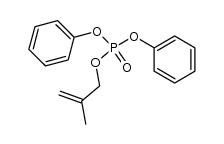 CAS#:32670-93-2
CAS#:32670-93-2 CAS#:115-11-7
CAS#:115-11-7 CAS#:628-56-8
CAS#:628-56-8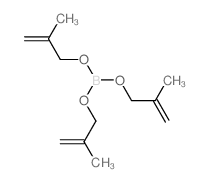 CAS#:78538-54-2
CAS#:78538-54-2 CAS#:64-19-7
CAS#:64-19-7 CAS#:3100-04-7
CAS#:3100-04-7 CAS#:7782-50-5
CAS#:7782-50-5 CAS#:594-37-6
CAS#:594-37-6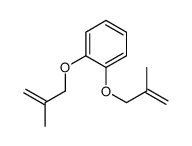 CAS#:10500-86-4
CAS#:10500-86-4 CAS#:10523-77-0
CAS#:10523-77-0![2-[2-[2-(2-methylprop-2-enoxy)ethoxy]ethoxy]ethanol structure](https://image.chemsrc.com/caspic/125/111719-00-7.png) CAS#:111719-00-7
CAS#:111719-00-7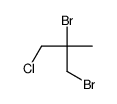 CAS#:10474-14-3
CAS#:10474-14-3 CAS#:109930-20-3
CAS#:109930-20-3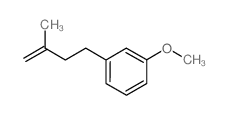 CAS#:40463-03-4
CAS#:40463-03-4 CAS#:3290-53-7
CAS#:3290-53-7 CAS#:300-57-2
CAS#:300-57-2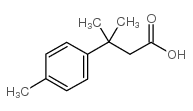 CAS#:42288-08-4
CAS#:42288-08-4 CAS#:4911-54-0
CAS#:4911-54-0
